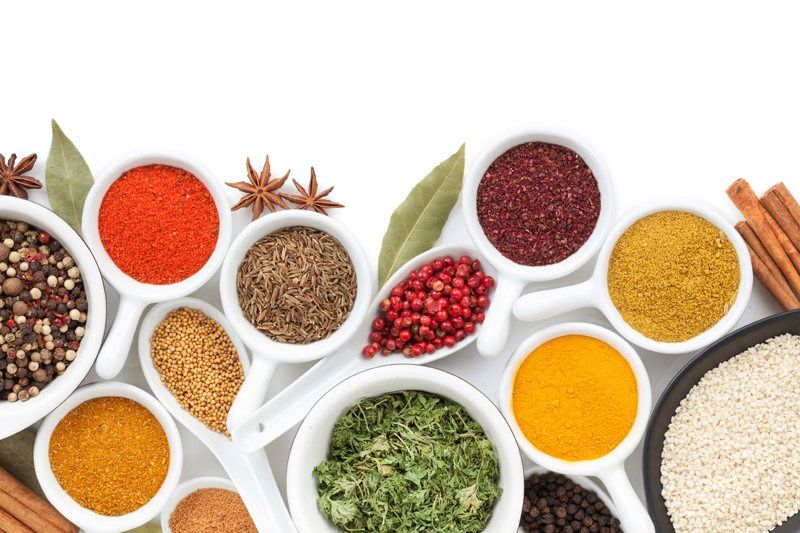2015 Flavor Trends for Food and Beverage
As manufacturers begin formulating anew in 2015, note the year’s predicted flavor trends, courtesy of leading flavor houses.

As manufacturers begin formulating anew in 2015, note the year’s predicted flavor trends, courtesy of leading flavor houses.
We are constantly reminded that taste is paramount and that no matter how healthy a product, shoppers simply won’t eat or drink it-or buy it again-if it tastes bad. Without further ado, we present the flavors that specialists predict will hit the sweet spot with consumers in 2015.
Back to Basics
Shoppers will continue seeking the familiar, for a variety of reasons.“Consumers have been inundated with options, and people are too busy to make so many decisions. The trend seems to be going full circle to simplicity,” says Teresa Olah, marketing director, Sensient Flavors (Hoffman Estates, IL). This year’s trends, she says, “center around one consistent theme: option overload.” In short, consumers are exhausted by the overwhelming number of food, menu, and flavor options on the market and want to streamline.
Familiar often means flavors closer to home. “With well-publicized global food safety concerns, North American consumers are looking more and more for tastes and products that are of domestic origin and often ‘retro-comforting,’” says Anton Angelich, group vice president, marketing, for Virginia Dare (Brooklyn, NY).
Perhaps this is why pumpkin pie is on Virginia Dare’s 2015 list of flavors to watch. “Pumpkin pie taste is so popular and trendy. It is showing up as a flavor in every conceivable product category and form: candy, coffee, alcoholic beverages, bakery, dairy,” Angelich says. “It connotes comfort, Americana, Thanksgiving, Halloween, and the heart-warming of the autumn season.”
Flavorchem (Downers Grove, IL) also names pumpkin spice as a 2015 flavor and says this flavor has been popular since 2013. It says complementary flavor gingerbread might eventually rival pumpkin spice in popularity, also for its homey appeal.
Similarly, “Everything Bagel” spice blend -a mixture of poppy seed, kosher salt, sweet onion sugar, sesame seed, garlic, onion, and fennel-is another familiar favorite, Sensient says.
Another blast from the past? Lemonade-with a twist. Sensient predicts Salted Satsuma Lemonade as a flavor to watch in 2015. “The surprisingly refreshing Vietnamese salted lemonade creates the perfect mix of the sweet, old-fashioned summertime favorite-with a salty update,” the company says. Satsuma is now especially popular in the New Orleans region of the United States, it adds, describing this Japanese mandarin varietal, grown in the United States, as “honey-sweet” and as “the next exciting citrus” flavor.
Finally, Virginia Dare recommends strawberry rhubarb, which Angelich describes as “an old-fashioned comfort food flavor with a certain specialness and uniqueness to its taste.”
Regional Reach
For consumers drawn to exotic flavors, regional inspirations are still going strong, however.
Influenced by Asian food, ginger “is showing up across all categories of products”-everything from ginger beer to ginger candy-Angelich says. Ginger’s many health benefits and variety of “heat” options make this flavor a handy one to have in a formulator’s toolbox.
Sensient predicts that 2015’s flavor trends will take their cues from the equator. African blue basil is a perennial, hybrid-breed basil that serves up unexpected flavor and anise undertones. And falernum is a sweet syrup with notes of almond, ginger, clove, lime, vanilla, and allspice. “It’s often paired with rum in Caribbean and tropical drinks, but it’s popping up in non-alcoholic beverages like coconut water and is expected to hit the food market in coming years,” the company says.
One region formulators must cater to is Latin America, Flavorchem advises. “Latin American flavors are predicted to have a significant influence globally over the next few years, as the eyes of the world shift to the region ahead of the Rio de Janeiro Olympic Games in 2016 and following the football World Cup in Brazil in 2014,” says marketing manager Ed McIntosh. “Such flavors have already started to emerge in the European ice cream market, with brands launching Dulce de Leche - and mojito-flavored ice creams.” Related flavors like key lime are popular, the firm adds.
North American marketers should also pay special attention to Hispanic flavors, considering the growing demographic. Flavorchem offers its customers a Hispanic Flavor Kit, backed by market research by Mintel, featuring flavors such as horchata, tamarind, mango, and mamey. Recreating homemade regional cuisine flavors on an industrial scale can be challenging, and this is where an experienced flavor firm can help by employing technologies like gas chromatography and mass spectroscopy to pinpoint individual flavor components.
Fruits
Fruity flavors thrive, and this year flavor firms have their finger on a few specifics.
Virginia Dare’s Angelich says “all-American” favorites like blueberry and raspberry, with their “many positive health associations,” will continue seeing demand. And sour cherry is “a more newly popular taste in this country, well known in Europe,” and has very positive health associations, Angelich says.
Superfruits like pomegranate and dark chocolate are a more sophisticated take on standard fruity fare, Flavorchem adds, and are adding new appeal to desserts and confectionery, especially in Europe and North America. And, in cases in which a nutritional product may contain flavor hints of a health-promoting fruit extract, flavor firms can boost that fruit flavor-in essence, to make the product taste even more like the fruit.
Vanilla, Caramel, and Maple
Vanilla, caramel, and maple also top the 2015 flavor list, say specialists.
Maple is “one of the trendiest new flavors, coming about by the appearance of maple water products in Canada,” Virginia Dare’s Angelich says. “Although unheated processed maple water has little or no characteristic maple taste, consumers have a strong, natural positive association with maple.”
Universally, vanilla continues to lead, anchoring most dairy, ice cream, and bakery products. It is, as Angelich says, “Simple. Clean. Familiar.” Want a twist on that? Make it salted vanilla and salted caramel, Flavorchem says, to capitalize on consumer demands for salty-and-sweet.
Unexpected Combinations
Salty-and-sweet in fact represents one of the most appealing flavor trends out there: unexpected flavor combinations.
Sensient predicts that smoked Chantilly will be a 2015 flavor to watch. “Food and drink menus continue to feature smoked, roasted, toasted, and burnt flavors. Pairing this sophisticated profile with vanilla- or brandy-infused Chantilly cream evokes a new level of interest by combining two unexpected, but harmonious, flavors.”
And, riding on the popularity of maple, Sensient suggests maple mirch, or “mirchi.” “The popularity of Indian cuisine is growing as consumers learn the depth and breadth of this particularly rich heritage. Mirch, Hindi for chili pepper, brings spice and heat from India and combines it with maple, a fan favorite in the Western world. This East-meets-West hybrid blends something familiar with something exotic and is something consumers will be eager to try,” the company says.
Rethinking Sourcing
Consumers and manufacturers are paying more attention to where flavor ingredients come from, whether that means natural or organic or non-GMO, vegan, gluten-free, or sustainable. As Virginia Dare’s Angelich says, “People have a greater interest in clean label, sustainable, locovore, and lower-carbon-footprint food source origins.”
Long winters and droughts are forcing manufacturers to consider alternative food sources, as well as to increase the efficiency of those sources, adds Sensient Flavors. For this reason, desert plants are rising in popularity, and Sensient predicts this will give way to two particular flavor trends. Desert wildflowers is one. “Though polarizing, floral flavors are on the rise for 2015,” the company says. “The bouquet of wildflowers grown in desert regions will be the next frontier combining eco-friendly initiatives with the elevated status these flavors enjoy.” The firm predicts that cascara tea will also find a home with consumers. “Commonly consumed in Bolivia (where it’s called Sultana), cascara tea is made from the dried berries of the coffee plant and is often mixed with cinnamon,” Sensient explains. “The flavor is a subtle mix of raisins, sweet prunes, and musk.”
Take a look back at Sensient’s predictions for 2014 Flavor Trends for Food and Beverage
Jennifer Grebow
Editor-in-Chief
Nutritional Outlook magazine
jennifer.grebow@ubm.com
Photo © iStockphoto.com/karandaev

Prinova acquires Aplinova to further increase its footprint in Latin America
April 7th 2025Prinova has recently announced the acquisition of Brazilian ingredients distributor Aplinova, which is a provider of specialty ingredients for a range of market segments that include food, beverage, supplements, and personal care.

.png&w=3840&q=75)

.png&w=3840&q=75)



.png&w=3840&q=75)



.png&w=3840&q=75)





















